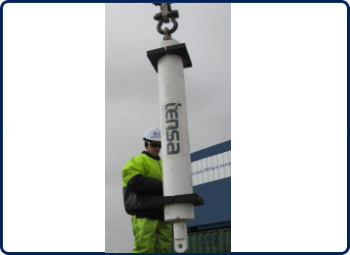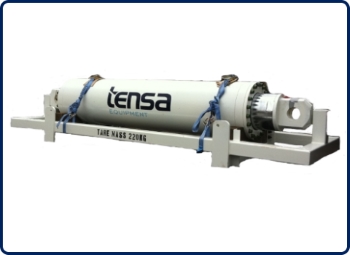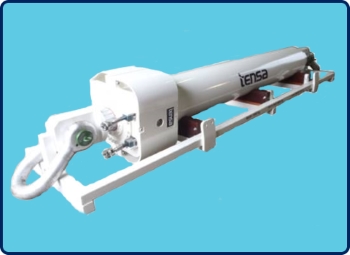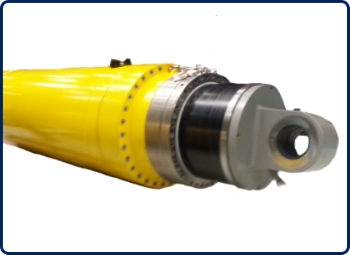Dynamic Load Reducer (DLR)
TENSA Dynamic Load Reducer (DLR) is designed to be used with offshore cranes to reduce the dynamic loads associated with lifts from moving vessels. The DLR can also be used in applications such as pile driving where unexpected large loads can be applied to the crane if the pile self penetrates whilst driving.
The DLR is a damped gas spring with spring rate, energy absorption and damping tailored to absorb the energy from a moving load and bring it gracefully to rest with minimal recoil. The DLR is attached between the crane hook and the lifted load. With the DLR, the dynamic load factor for boat lifts will be reduced, allowing the crane capacity to be increased significantly depending on the sea state and load. The benefit can be determined once the specific crane design and operating parameters, load and seastate have been agreed.
The DLR changes the crane’s dynamic factor (Cv). Typically it can be reduced from 2.4 to 1.7 or less. The DLR has maximum effect in large seastates. Typical capacity increase seen on common rig cranes in normal sea states is 25 % to 40%.
TENSA DLR series are modular and can be adapted quickly to different strokes and operating conditions. Two units can be used in parallel to double the capacity. Additional accumulators can be added to further improve the operating performance for extreme conditions. Rigorous calculations and simulation are used to determine the optimum stroke, stiffness curve, energy absorption and damping.
The design of the DLR is in accordance with API spec 2C Specification for Offshore Cranes as well as other relevant API and AS codes covering the mechanical construction.
The TENSA Dynamic Lift System (DLS) is a special feature that may be used in conjunction with the DLR to prevent the load from re-contacting with the supply vessel/barge when the crane hoisting speed is too slow. This system is ideal for cranes that do not have adequate lift speed for the proposed lifting seastate.
The following standard models are available:





